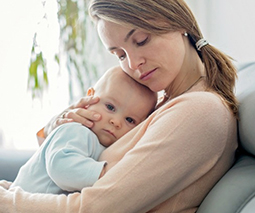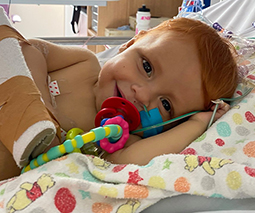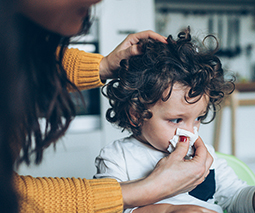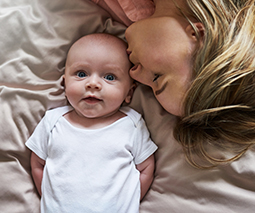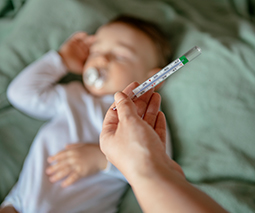Febrile convulsions: Everything you need to know to be prepared

A febrile convulsion sounds like every parent’s worse nightmare, but what exactly are they? Heidi Young, clinical nurse specialist in childhood allergy and founder of The Nest, explains the ins and outs of febrile convulsions and what we should do when they happen.
What is a febrile convulsion?
According to Heidi, a febrile convulsion is a reaction to a sudden temperature and is a lot more common than you think. “A febrile convulsion is when the child’s temperature shoots up really quickly and they basically go into a fit,” she says. “One in 30 children will have one of these or more; it’s terrifying, but the child normally does not come to any harm.”
Febrile convulsions can run in the family and usually occur between the ages of six months and six years. “You’re unlikely to have them before the age of six months but you’re also unlikely after the age of six,” says Heidi. “It does happen sometimes, but not very often.”
Listen to Heidi Young on Feed Play Love:
What happens?
“Children can look like there’s nothing wrong at all, [as though] they don’t have any illness, so when they have a febrile convulsion, there’s going to be something – they’re not well, they just maybe haven’t shown it yet,” says Heidi.
When adults have a fever, they can shake and feel very cold, which is referred to as rigors. According to Heidi, a febrile convulsion is like this but more extreme. “This is basically rigors but like on steroids,” she says. “[Children] really shake, and it actually can turn into what looks exactly like an epileptic seizure, they can be unconscious, they can often change colour and they stiffen and jerk and can be completely stiff.”
What should I do?
According to Heidi, there’s nothing you can do to stop a febrile convulsion. “All you really have to do when it’s happening, is to make sure that the child is in a safe place, so if they’re on a concrete floor, for instance, we can try and either get some pillows underneath them, or if we’re close enough to a soft surface we can try and just gently move them across,” explains Heidi.
“But we need to be careful picking up a child that’s having a febrile convulsion – they’re completely stiff – they might fall out of your arms because they’re jerking, so the safest place for them to have it would be on a carpet, on a sofa, in a bed, in a cot where they’re not going to hurt themselves.”
Heidi says that febrile convulsions take about five minutes, which for a parent, can seem like a lifetime. “They’re often less,” she says. “They often won’t last as long as that but they can last five minutes.”
The one thing Heidi suggests is to time the length of the convulsion if possible. “It’s really handy for the doctor to know how long they were actually convulsing for,” says Heidi. “Because that can be the difference between them just saying okay, it was a febrile convulsion, or we need to do investigations.”
When do I go to hospital?
If it’s the first time your child has had a febrile convulsion, Heidi recommends calling an ambulance. “That changes with the second, third, fourth, if that’s going to happen, because we’ll be educated about it from the E.D. department, but we need to call an ambulance the first time” she says. “For the first febrile convulsion, there’s a reason they’ve had it as well, so they’re going to need to be seen by doctors because there’ll be some underlying infection or virus.”
Another reason for calling an ambulance, is the possibility of the convulsion lasting longer than it should. “If they don’t come out of it in five minutes, it can start having impacts on the oxygen levels, so you really need to know,” says Heidi. “I think the average time for an ambulance is between five and seven minutes in Sydney, so you really need to know that someone’s on their way, just in case.”
Alternatively, if the convulsion stops and you feel able, Heidi says you can drive your child to hospital instead. “They’re very unlikely to go straight into another one,” she says. “It doesn’t really work like that, normally the temperature peaks and then will stabilise.”

Can I treat a febrile convulsion?
According to Heidi, giving a child paracetamol or ibuprofen is not recommended. “The temperature flies up so quickly that it breaks through anything that that you’re going to give them and that won’t necessarily stop a febrile convulsion,” she says. “So, we’re really going back a good few years now and saying that if your child has a fever but they’re quietly comfortable that we actually shouldn’t be giving paracetamol or ibuprofen to kill the fever because that fever is there to kill the bug or whatever is the reason is that they’re ill.”
A child might be irritable after the seizure, though, much like a child coming out of an epileptic fit. “There can be a bit of confusion but normally they should just carry on as a normal sick child would when they’re a bit grumpy and a bit off their food,” says Heidi.
